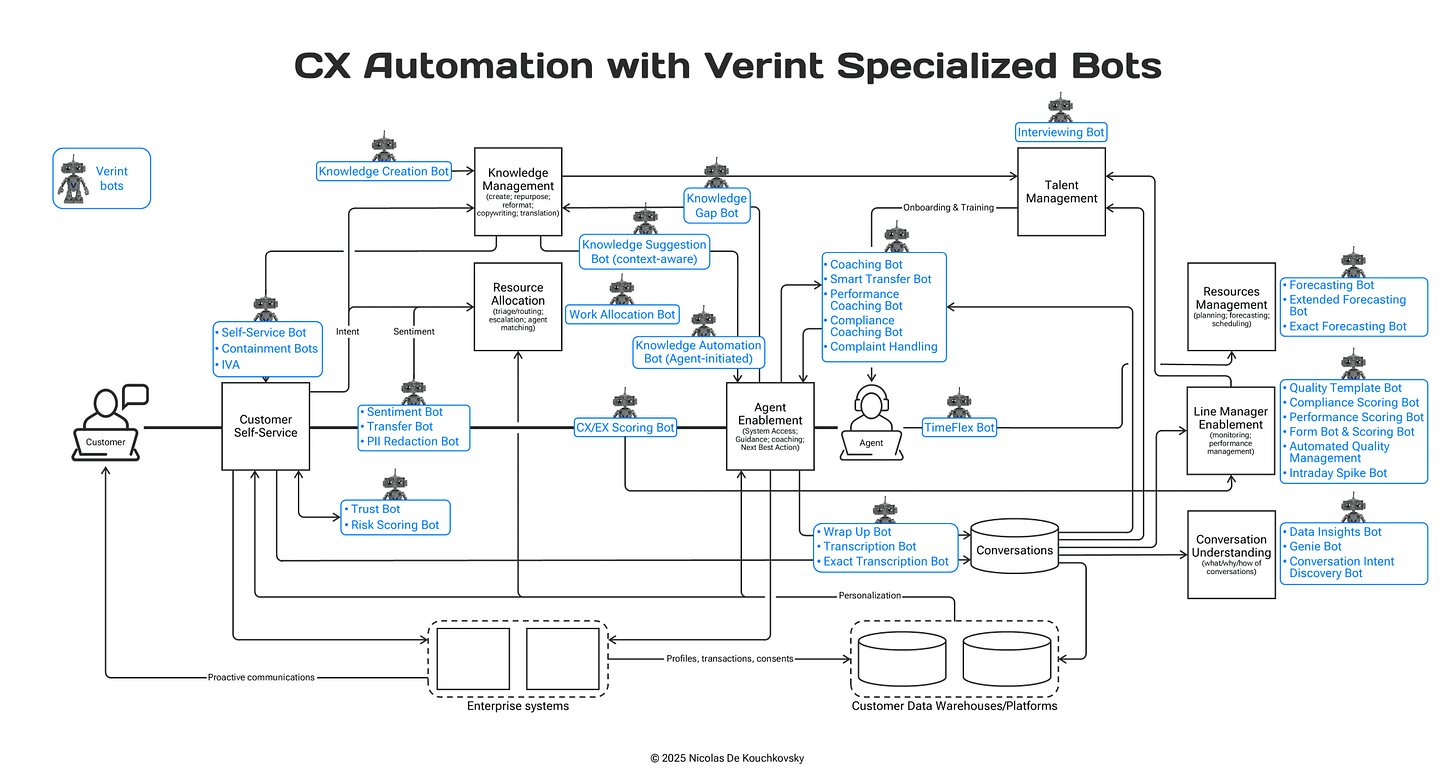In early September, Verint held its annual user conference and partner summit in Orlando.
Despite coming shortly after the announcement of its acquisition by Thoma Bravo and its planned merger with WEM rival Calabrio, the company remained focused on its automation agenda, keeping the event firmly centered on the theme of driving business outcomes with AI.
Two years ago at the same event, Verint took a bold step by embracing a CX automation strategy built around what was then a novel concept: an army of specialized bots, each dedicated to a specific task. At the time, the company’s repositioning and its open CCaaS approach drew praise from analysts, albeit with a cautious wait-and-see perspective.
Fast forward to today, Verint has held its course, securing numerous multimillion-dollar wins while maturing its customer engagement model to focus conversations squarely on desired outcomes. Its bots now feature a dashboard that translates metric improvements into quantified dollar impact.
The company has adopted a “one task at a time” automation strategy, starting small with risk-free trials that allow customers to pilot a bot on a subset of interactions or agents in production. If results are not achieved within 90 days, no payment is required.
The event highlighted a range of customer projects. While the product itself took a back seat, Verint stands out as one of the first vendors to center its platform on data through the Data Hub and to adopt an open AI approach with its Da Vinci framework, blending proprietary, commercial, and customer-built models.
Over the past two years, the company has built more than 50 bots, including two new ones unveiled at the event. The Exact Forecasting Bot, as its name suggests, brings AI-driven forecasting precision to new levels. The company also introduced an innovative Intraday Spike Bot, which monitors live traffic to anticipate spikes or capacity issues, identifies root causes, and enables supervisors to take proactive action. In the demo, a supervisor instantly created a voice agent using a declarative UI to preempt drivers of a traffic surge.
When asked where the full list of bots can be found, Verint points to its website. Seeing value in providing a comprehensive view, I conducted an inventory with the help of ChatGPT and mapped it onto my Jobs-to-Be-Done CX framework.
With the rapid rise of Agentic AI, I was surprised to see Verint sticking to its bot terminology. This is not to suggest that it should jump on the “agent washing” bandwagon, but the term bot is often associated with scripted automation and poor customer experiences. More importantly, it does not convey the new art of the possible enabled by the latest AI technologies. Interestingly, the company showcased a new agent builder with a declarative UI for its Intelligent Virtual Agent.
The event marked an important milestone for Verint to take stock of its 2023 strategy shift and to assert its pole position in the CX automation space, a market now poised for explosive growth with the advent of Agentic AI.




